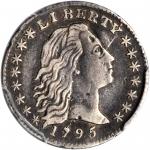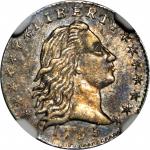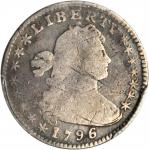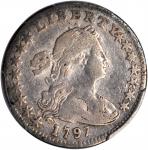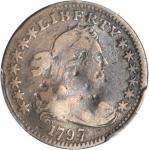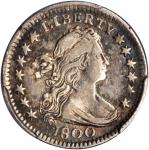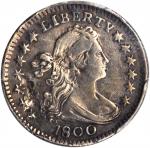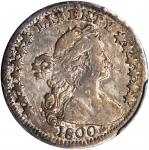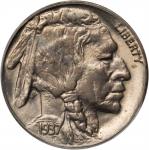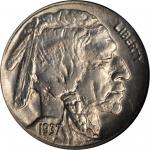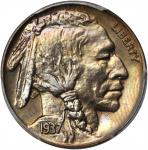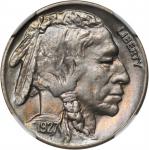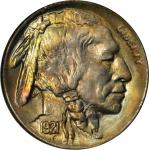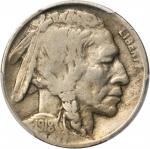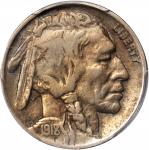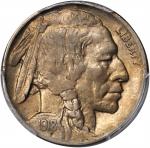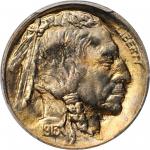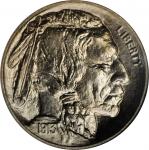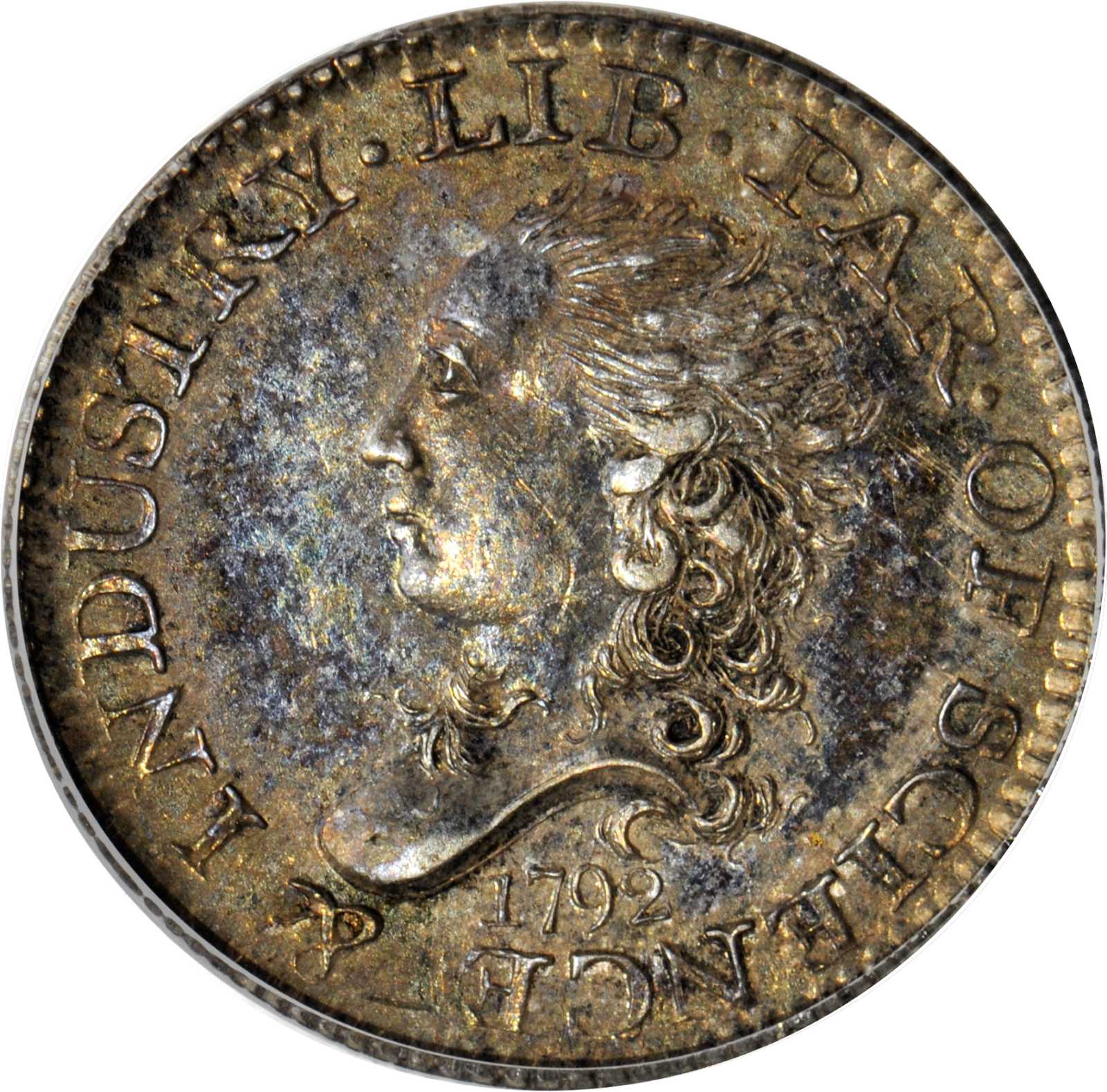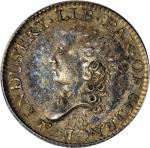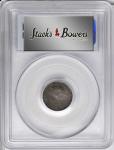1792年1角硬币 PCGS MS 64
1792 Half Disme. LM-1, Judd-7, Pollock-7, the only known dies. Rarity-4. MS-64 (PCGS).
Obv:A bust of Liberty with short, curly hair faces left, the date 1792 in small digits immediately below the curved truncation of the bust. The legend LIB. PAR. OF SCIENCE & INDUSTRY is around the border, an abbreviation of "Liberty, parent of science and industry."
Rev:A small eagle with spread wings faces to the left with the denomination HALF DISME and a single star below. The legend UNI. STATES OF AMERICA encircles most of the reverse periphery. All 1792 half dimes except for the unique copper impression (Judd-8) are struck in silver with a diagonally reeded edge, and a single set of dies was used to complete the entire mintage of approximately 1,500 pieces. The coins were struck with medallic alignment. This is a truly memorable example of the scarce and historically significant 1792 half disme. The strike is uncommonly well executed for a type that often displays blunt central definition and/or incomplete denticulation around the borders. On this coin, all design elements are sharp except for the three highest curls of Libertys hair and the center of the eagles breast. The denticulation is complete around both sides, although for accuracy we note that it is somewhat thin along the upper left reverse border. These impressive features are fully appreciable given the outstanding level of preservation that fully supports the desirable Choice Mint State grade from PCGS.
Free of wear, the surfaces retain full satin to modestly semi-prooflike luster that is most intense when the coin is observed at direct lighting angles. The entire package is draped in mottled sandy-gold, olive-apricot and mauve-gray patina that speaks volumes about the coins originality. An expertly produced, carefully preserved near-Gem that would serve as a highlight in the finest numismatic cabinet. The story of the 1792 half disme is well known, especially through the research and publication of information by Dr. Joel Orosz and Len Augsburger, whose book, <em>The Secret History of the First U.S. Mint</em>, is an essential addition to any numismatic library. Copies can be found on the Whitman Publishing Company website and at book sellers, a prime source for much information in our present text. Certain details were also given in "The 1792 Half Disme: America’s Most Distinctive Coin," a special essay by Augsburger, Orosz, and Pete Smith published in our January 2013 auction catalog. It seems that in mid-July of 1792 President Washington personally arranged for a supply of silver to be delivered to the Harper shop in Philadelphia, where about 1,500 silver half dismes were struck one-by-one using a hand press. Nearly all of these were placed into circulation, where they found immediate use, as verified by most of the several hundred survivors today showing significant wear. Director Rittenhouse kept four personally, one of these being the coin showcased in our January 2013 Cardinal Collection sale. The historical significance of this issue was defined by none other than President Washington who, in his address to Congress on November 6, 1792, identified these coins as a regular coinage of the United States Mint. The requisite portion of the presidents annual address is quoted:<em>"In execution of the authority given by the legislature, measures have been taken for engaging some artists from abroad to aid in the establishment of our Mint. Others have been employed at home. Provisions have been made for the requisite buildings, and these are now putting into proper condition for the purposes of the establishment. There has been a small beginning in the coinage of half dismes, the want of small coins in circulation calling the first attention to them."
What historical research has discovered has come from two main sources. The first is the 1792 Memorandum Book by Thomas Jefferson, with two entries of particular interest to this issue. This is a personal journal of Jeffersons but no mention of these has been preserved in any official Mint documents known. Jefferson noted on July 11, 1792, "Delivd. 75 D. at the Mint to be coined." Since the site of the new Mint was being razed and had just been purchased a few days before, it is likely Jefferson refers to another location where the coinage would take place (i.e., Harpers shop; see below). Then following this entry is another two days later, dated July 13, 1792: "Recd. from the mint 1500. half dismes of the new coinage." Jefferson then left Philadelphia for Monticello, his home in Virginia. Jeffersons record makes no statement as to what he did with these half dismes. Did he spend them? Give them to the Mint for distribution? Did he hold onto them until he met with George Washington on October 1, 1792 at Mount Vernon? The written record is frustratingly silent. However, it would seem likely that "want of small coins in circulation" would have compelled Jefferson to get them there, rather than wait a few months to return the silver coins to Washington after such great lengths were accomplished to get these coined in July. The second document is a Memorandum created in 1844 by John McAllister, Jr., a Philadelphia numismatist who summarized the reminiscences of Adam Eckfeldt, the retired second chief coiner of the U.S. Mint. Eckfeldt was in 1792 a part time contractor for the Mint. Although some portions of this Memorandum have been discounted as fanciful, other parts are likely accurate. Eckfeldt recalled that the half dismes were struck before the North Seventh Street Mint was opened, in the cellar of John Harper, a saw maker and also part time contractor at the Mint.
This Memorandum went on to say that silver bullion or coin in the amount of $100 was provided by President Washington, and the half dismes were not struck for circulation but rather for Washingtons use as "presents" for friends in Europe or in his home state of Virginia. While Eckfeldt was right about the timing of the striking, and probably accurate about using John Harpers cellar, no one has ever found any hard evidence that Washington provided the silver or ever presented any of these half dismes to his friends. One would think a number would have survived with notations inscribed such as "Gift from President Washington, do not spend." As noted, most of these half dismes were spent around the time of issue, with many showing evidence of many years in circulation. A few were obviously saved and treasured, such as the present offering. Although the McAllister Memorandum was not published until 1943, the gist of its contents was recounted in an article appearing in the February 6, 1853 issue of the Philadelphia Dispatch.
The story quoted current Mint personnel Franklin Peale and William E. DuBois, respectively the successor and the son-in-law of the late Adam Eckfeldt. It was through this newspaper story that Eckfeldts reminiscences first entered the consciousness of numismatists. Although closely related to the 1792 "proposed coinage" of the United States Mint, and listed among them on pages 100-102 in the 2019 edition of the <em>Guide Book</em>, President Washingtons address clearly establishes the 1792 half disme as a regular issue of the United States Mint. It is the first regular issue U.S. Mint coin, as such, evidence for which also comes from the fact that some 1,500 silver impressions were mad--far too high a mintage for a proposed (i.e., pattern) coin. Additionally, the 1792 half disme as an issue clearly circulated, and not only because Washington linked the production of these coins to a need for small change in commercial channels at that time. Most survivors of this issue are worn, some extensively, and it is obvious that many 1792 half dismes spent a considerable amount of time in circulation as coinage of the realm. In addition to its historical significance as the first regular issue coin struck under authority of the United States Mint, the 1792 half disme enjoys such strong demand among advanced collectors due to a couple of popular stories attached to this issue. The first has it that George Washington himself provided some of his own silverware to be melted down and coined into these half dismes--this from the Memorandum was picked up by the newspaper <em>Philadelphia Dispatch</em> in 1853.
Another story suggests that the portrait of Liberty used on the obverse of these coins is a likeness of Washingtons wife Martha. Neither has yet been proven, but have become a part of the mythology of our numismatic history. The 1792 half disme is a fascinating coin, one that has attracted researchers over a long period of time, with Joel J. Orosz conducting perhaps the most extensive research, much of which has been published in <em>The Numismatist</em> and elsewhere in recent years. The designer and die cutter are thought to have been Robert Birch, who produced the motifs on contract. The appearance is quite similar to that used on the famous Birch pattern cents of the same year. Just as the 1652 Pine Tree shilling variety Noe-1 is a candidate for being the "poster example" of an American colonial coin, perhaps the 1792 half disme would be ideal as such for a Philadelphia Mint coin. There is so much history in this piece that an hour-long presentation could be given concerning it, and still not all information would be given.PCGS Population: 8; 5 finer (MS-68 finest).




